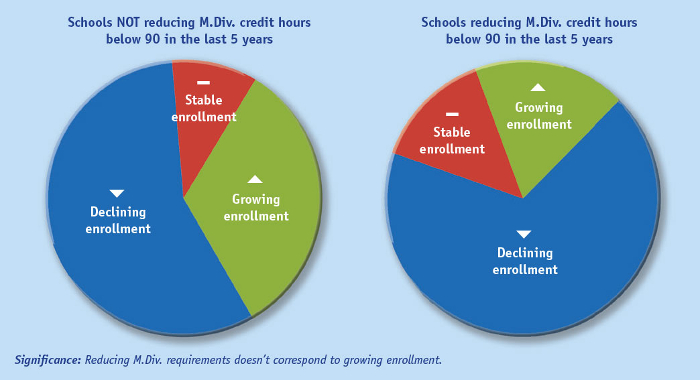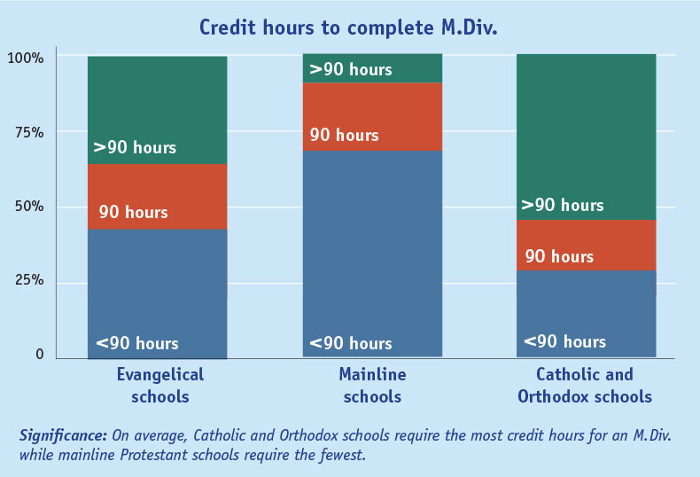Today’s seminary students are busy. They are older than students of the past, with family responsibilities and debt from their undergraduate educations. It seems reasonable that they would be eager to choose an M.Div. program that will not burden them further. So does lowering credit hour requirements lead to higher enrollment?
It sounds sensible enough, but beyond using just intuition on this topic, we can explore it using the data we have on accredited theological schools.

Among schools that are members of the Association of Theological Schools (ATS), there is a notable trend toward a reduction in the number of credit hours required for the M.Div. In the most recent decade, many schools reduced their required M.Div. hours to below 90. Half of ATS schools now require fewer than 90 hours to complete the M.Div. A decade ago, the vast majority of ATS schools required 90 or more hours to graduate with an M.Div. degree.
A recent review of ATS member school websites shows the following credit hours required for the M.Div. among the schools:
-
About 25% of theological schools require 72–80 hours.
-
About 25% require 80–89 hours.
-
About 20% require exactly 90 hours.
-
About 15% require 91–99 hours.
-
About 15% require 100 or more hours.
I reviewed the change in enrollment over the last five years for schools that had reduced the credit hours within their M.Div. This included about 115 schools — almost half of the ATS schools that offer the M.Div. The charts below reflect what happened with M.Div. enrollment in the last five years at schools that have reduced their hours below 90. For the purposes of the chart, “declining” is defined as a decrease in enrollment of more than 5 percent, “stable” is defined as a change in enrollment of less than 5 percent in either direction, and “growing” is defined as an increase in enrollment of more than 5 percent.
Finally, I reviewed the current M.Div. credit hour expectations by ATS schools stratified by ecclesial family. At present, mainline Protestant institutions are more likely — by a substantial margin — to require fewer than 90 hours to complete the M.Div. degree.
Overall, M.Div. enrollment has declined from about 32,000 in fall 2012 to about 29,000 in fall 2016. Six in ten schools have shown M.Div. enrollment declines.

Among both cohorts — those schools that have reduced their credit hours, and those that have not — more have shown M.Div. enrollment decline than growth. However, the number of schools with declining enrollment is actually greater among those that have reduced their credit-hour requirements than among those that have not.
There are many reasons why M.Div. enrollment grows or declines. It is not possible to know with certainty if enrollment declines would have been deeper had changes in required hours not been made. Nevertheless, while there may be appropriate reasons to reduce the number of credit hours within a degree program, assuming enrollment growth because of a decrease in credit hours does not seem to be supported by the data.
Adapted with permission from an article that previously appeared online at www.ats.edu/blog/data-matters/impact-enrollment-reducing-mdiv-credit-hours.